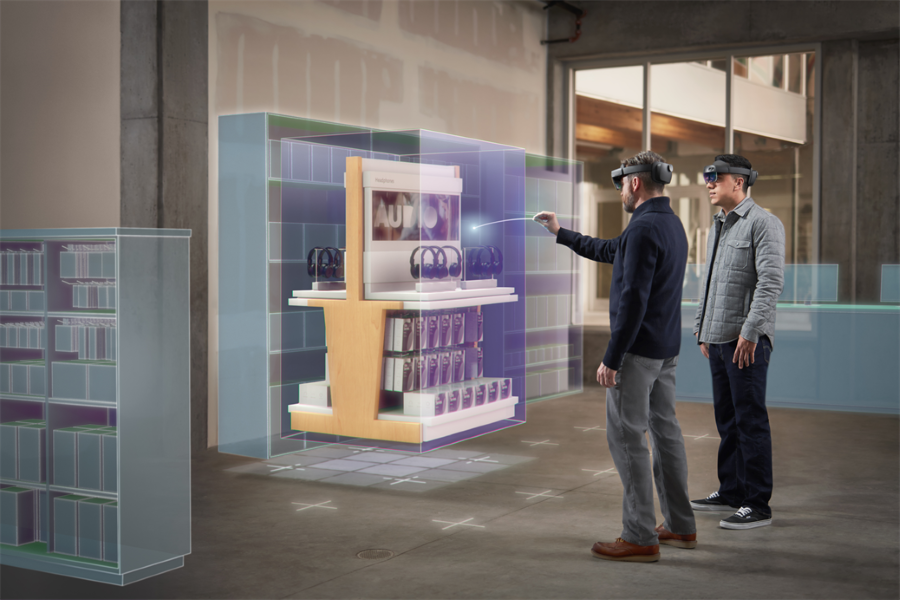
What’s in store for retail with the customer data platform
According to industry analysts, 2020 will bring exciting innovations that promise to reshape the retail industry. Let’s take a look at the opportunities and explore the data challenges resulting from these trends.
Augmented reality (AR) takes the stage
Technology is catching up with expectations, with second generation augmented reality tools that make the technology more immersive than ever before for retail customers. Customers can try on outfits or makeup or even see how furniture will look in their own living room. By enabling try-before-you-buy experiences, augmented reality not only boosts sales, but also reduces returns from online shoppers. With tangible benefits to both the top and bottom line, more retailers will eye opportunities presented by augmented reality.
Digital and physical are converging
It’s no longer either or when it comes to online and offline. Savvy consumers want the best of both worlds, so in the near future, e-commerce gets physical with augmented reality while stores go digital. The death of the store has been greatly exaggerated. Instead, there will be a transformation of retail space. Customers still like the experience of in-person shopping, which combines entertainment and utility. A new breed of stores without walls will go beyond the confines of the physical space to create a blended experience where customers at the store can research products they see in person, order items that are out of stock in the store, or get location-targeted texts about items they have browsed online that are available in store.
Shopping goes social
Thanks to the expanded e-commerce capabilities of social platforms, social shopping is gaining wide-spread traction. Social shopping is the merging of social media and commerce, and it’s yet another channel for retailers, big or small, to build brand awareness, generate leads, and engage customers, as well as transact. From buy buttons to shoppable posts and stories, it’s time for retailers to get in on the action. Social networks give brands access to highly engaged audiences with high purchasing intent.
The rise of chatbots
As technology improves with natural language processing and AI, customers are becoming more comfortable interacting with chatbots for customer service and purchases. Chatbots can assist customers and give them the sense that they’re interacting with a knowledgeable retail associate. Chatbots deliver a high level of personalization with automation, allowing brands to deliver consistent, high-quality customer service at a lower cost. Answering customer questions immediately keeps customers on the site and lowers the chance that they will leave for a competitor or defer the purchase while a smooth hand-off to a live agent will strike the right balance between digital and human touch.
Customer data platforms (CDP) fuel exceptional retail experiences
These four innovations present retailers with the opportunity to take the lead in customer experiences. But they also create new challenges with even more customer touch points and data silos. For retailers who are already grappling with data overload, it’s hard to move forward. That’s where a customer data platform (CDP) comes in. It gives retailers the freedom to innovate without the complexity and cost of managing customer data and extracting value from the data. A customer data platform gives the line of business the tools to deepen its understanding of the customer and enhance the customer journey. The platform unifies an ever-increasing volume of customer data from all sources, including not only traditional sources like campaigns, transactions, and calls, but also emerging sources like social shopping, augmented reality, and chatbots to create a single view of the customer which is essential for powering personalized experiences at scale.
Take for example augmented reality and social shopping. In the morning, your customer browses your website, trying on products with the help of augmented reality. In the evening, they scroll through social media. In an ideal world, they see highly relevant shoppable social posts featuring the products that they’ve not only tried on virtually but also are most likely to buy based on previous purchases. This seamless experience is powered by a customer data platform that is able to bring together disparate data across web, augmented reality, social, and past transactions to create a single view that is at the core of personalized engagement.
Microsoft Dynamics 365 Customer Insights
Microsoft Dynamics 365 Customer Insights is a preassembled and flexible customer data platform with built-in artificial intelligence (AI) to unify customer data across all sources and generate actionable insights that power personalized experiences. Using prebuilt connectors, the solution brings together customer data from any source. The solution automatically resolves customer identities using AI and creates a persistent, unified customer profile. Customer Insights proactively identifies segments and generates predictive insights such as churn rates, lifetime value, and recommended products. Real-time integration with business applications and business processes ensure that marketing, sales, and service efforts are tailored for each customer. Brands see results faster with Customer Insights, an intuitive and ready-to-go customer data platform that requires minimal training and IT assistance.
Microsoft’s customer data platform powers personalized experiences for retail customers while maintaining the strictest compliance and security standards so that all customer data is securely managed and adheres to the General Data Protection Regulations (GDPR). Built on a hyper-scale Microsoft Azure platform, Customer Insights allows organizations to tap into powerful analytical and full customization capabilities using Microsoft AI, Azure Machine Learning, and Power Platform.
Learn more about Customer Insights and see how global brands are transforming the retail experience with a single view of the customer.



